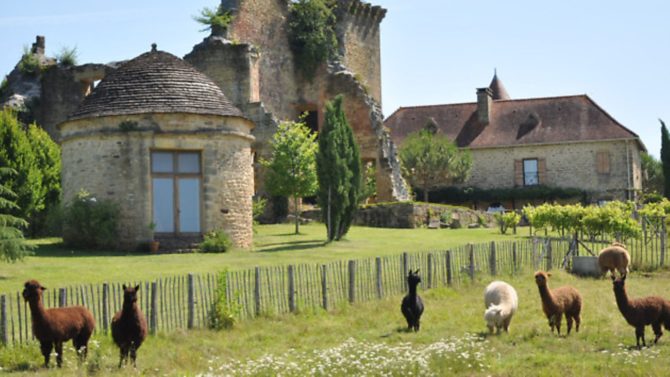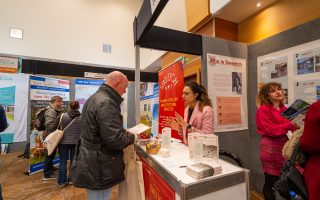Dordogne and beyond: an estate agent interview

Cate Carnduff of Herman de Graaf Immobilier answers our questions
What part of France do you cover?
We cover a fairly large area radiating to up to an hour’s drive from our office in St-Jean-de-Côle. This extends into northern Dordogne but we also reach the Charente/Haute-Vienne and Corrèze borders.
What kind of budget does your typical British client have?
In the 10 years I have been selling property I don’t think we have known a time when sales were so varied. One month we may have the budget trend being €500,000, and the next month it’s €120,000! What’s for sure is that buyers expect to get a lot for their money.
What kinds of properties are proving popular with your British buyers?
People seem to be interested in property that can evolve. Many British buyers are not prepared to relocate to France permanently right now, even if for many this remains their future intention. So they are looking for property which could be extended, perhaps one with outbuildings to convert, or a house that could be run as a B&B or shop. Equally, they seek property that is in an unloved and abandoned state, in which they see the potential for renovation and subsequent capital gain.
How is the French property market looking to you at the moment?
It’s still fragile, though now that the prices are so attractive and the exchange rates for the British buyer are getting better all the time, I expect to see a real improvement in the market in 2015. Dordogne is renowned throughout Europe and we do also currently have a lot of interest from markets other than the British.
What are your predictions for the market over the next six months?
The autumn will, as always, see the sale of some very cheap houses, as vendors tend not to want to wait until next spring to sell their property, and canny purchasers maximise on this. I expect it to be a generally quiet end of year, before a strong start to 2015.
What are the cheapest and most expensive properties on your books at the moment?
One of the most interesting properties at the cheaper end of the market is a stone cottage, set in a beautiful hamlet on 2,600m2 of land. It needs work but is full of character features such as blackened beams, terracotta floors and stone fireplaces, and the price is just €65,000. In the upper price bracket, at €875,000, we have an exceptional property consisting of three houses, a pigeonnier, 11x5m swimming pool, consolidated medieval château ruins and outbuildings with 2.8ha of land. This is one of my all-time favourite properties: a visit here and you just don’t want to go home.
What would be your dream property pick?
This isn’t easy, but I think I would choose a property that, oddly enough, would be a typical British choice. It’s a restored two-bedroom farmhouse near Hautefort, not overly large but which has all the essential spaces and a lovely workshop for my husband, convertible into another habitable cottage. There is already one separate cottage set up for guests, as well as several outbuildings and lovely views across the property’s acre of land and beyond. It’s on the market for €397,000.
Do you have an inside secret about your area that people might not know?
Possibly that the French from other departments also choose to come to live in this area of Dordogne, as they too are impressed by the open, friendly attitude of the Périgord locals.
What would be your top piece of advice for a French property buyer?
Without a doubt use an established, bilingual agent; there is too much room for misunderstanding when the agent is not able to correctly communicate with the French vendors. A good agent will also help make buying your dream property an enjoyable experience. As they are professional negotiators, it rarely costs more to use them and there is a lot more security in doing so. In recent years we have seen clients try to plan their own property search and schedules via the internet, which invariably results in them driving round and round the department to view properties which could have been easily scheduled by perhaps two or three agents. Get the agent to do the work: that’s why they exist!
Share to: Facebook Twitter LinkedIn Email


